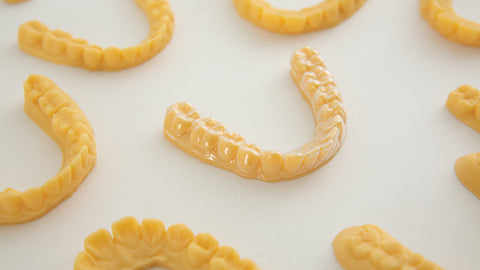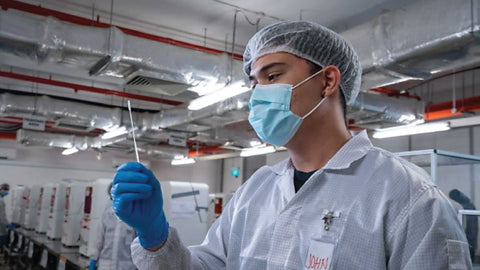How Is Technology Revolutionizing The Dental Industry?
October 16, 19 | 4 mins read
It is without a doubt that the dental industry has undergone radical changes over the past few decades. From as early as 1987, the first computer-aided design / computer-aided manufacturing (CAD/CAM) system was introduced into the dental market and ever since it has been continuously changing the way dental professionals approach their workflows. Today, we are seeing CAD/CAM technology being applied increasingly more in both practices and laboratories ranging from digital impressions from intraoral and extraoral scanners, treatment planning software to milling machines and 3D printers.
It is obvious that CAD/CAM adoption has led to various advancements in the dental industry. But the one question that most dental professionals peeking into the realms of CAD/CAM often ask is why should we adopt it when traditional dentistry still works?
Here are 4 reasons why digital dentistry is not just a fad and is here to stay.
Simplified Workflow
CAD/CAM technology has greatly streamlined various processes in the dental industry by reducing the number of tasks for both chairside and laboratory professionals. The digital thread in dentistry begins with a digital impression.
The traditional method of acquiring an impression is a tedious process that requires a lot of steps including tray selection, material preparation and model construction. This is a lengthy, messy and uncomfortable process that both patients and staff highly dislike. Not to mention the degree to which the process is prone to errors, resulting in an inaccurate model for laboratories to work with.
For digital impressions, an intraoral scanner is used to capture a series of images of a patient’s teeth. This eliminates the many steps required using the traditional impression method, reduces waste from impression material, and more importantly, increases patient comfort and the accuracy of the impression model. The captured image is then saved as a digital file that could be shared with laboratory technicians instantaneously and stored for archiving.
Enhanced Communication & Collaboration
One of the greatest benefits of digital impressions is that the captured image could be shared and modified seamlessly through the internet. This immediacy allows real time collaboration from multiple parties to achieve the most desirable outcomes for patients.
With CAD/CAM systems in place, dentists can immediately show patients the current condition of their case and discuss the treatment plan on the spot. This allows dentists to communicate with their patients more effectively and encourages confidence on the patience’s end that eventually increases the chance of case adoption. Digital workflows also help both dentists and lab technicians to work more effectively, removing the possibilities of human errors in traditional workflows that usually lead to inconsistencies and inaccuracies and eventually additional costs. On top of that, these digital files can be stored securely in the cloud giving dental professionals access to a patient’s entire history of treatment and cases.
Increased Patient Comfort & Improved Treatment Outcome
One of the main drivers for CAD/CAM adoption in dental was for increased patient comfort and improved treatment outcome and it has been serving this purpose well. On the chairside, the use of digital technology largely removes patient discomfort, reduces chair time and the number of return visits to repeat the impression taking process due to inaccuracy.
In addition, the high accuracy of intraoral scanners these days almost entirely eliminates the risk of appliances being made on inaccurate models by dental technicians. This would eventually lead to more predictable treatment outcomes and overall better customer satisfaction by both the patient and the dentist.
Optimized manufacturing process – 3D Printing
Speaking about digital dentistry without mentioning 3D printing would only be telling half the story. Just like how intraoral scanners appear to be the natural evolution of traditional impression taking, 3D printing is the younger brother poised to continue carrying the torch of dental appliance manufacturing from its older stone model sibling.
While it is true that 3D printing in dentistry is only possible with the adoption of more intraoral scanners that leads to more digital files, this new method of manufacturing has been applied in many innovative ways and is paving the way to take modern dentistry to the next level. Some examples of 3D printing in dentistry include the production of dental models, surgical guides, splints, customized impression trays, etc.
It is indeed exciting times in the dental industry. The evolving capabilities of CAD/CAM technology will further propel the industry to greater heights. With more practices and laboratories going digital, it is only a matter of time before digital dentistry becomes an industry norm. Some might argue it already is.
Are you ready to go digital?
Check out our next article How does 3D Printing Fit Into Your Dental Workflow to see where in dental does 3D printing take over and what are its implications.



